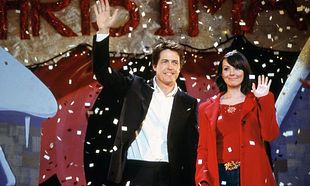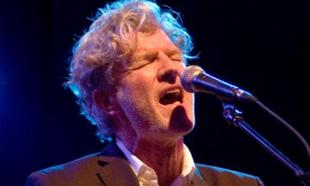Holograms of dead stars are a tricky topic. On one hand, there's an unshakable feeling that there's just something... well, tacky about them. Reviving the image of a famous person for the entertainment of audiences without their permission? It's strange and not a little unsettling. On the other hand, who wouldn't jump at the chance to see their long-departed idol – or at least something approximating them – 'performing' once again, if technology allows it?
It's sheer curiosity that has brought us to the 3Arena tonight to see the Roy Orbison: In Dreams Hologram Concert - as well as a childhood spent listening to The Big O, thanks to a dad who remains a mega-fan (he's here, too.) But how will it all pan out? Will it seem lifelike, or like Orbison's ghost is really amongst us, warbling along to his greatest hits? Will the thirty-piece orchestra manage to elevate his enduring songs sufficiently for the gathered crowd to buy in to the whole show?
As it happens, there were no qualms on those two fronts, at least. As Orbison's hologram emerges from the floor of the stage, there are gasps, followed by disbelieving laughter, followed by cheers. For all intents and purposes, he is standing there in a light grey suit almost thirty years after his death, singing and playing his guitar, even turning and gesturing to the musicians behind him. It's an astonishing piece of technology, and the orchestra are undeniably wonderful as they sweep through 'Crying', 'Only the Lonely', 'In Dreams', 'Running Scared' and an epic 'It's Over', while recordings of Orbison's unique voice sound as full-bodied and crystalline as anyone can remember.
The problems, on the other hand, range from the mundane to the philosophical. The boxy shape of the stage rig – presumably created with the hologram in mind – means that those sitting on either the left or right flanks of the arena cannot see the full set. In addition, two screens placed on either side of it, which are supposed to show the same visuals as the screen behind the stage (which show images of Orbison and those influenced by him – even Bono makes an appearance) are not working. Basically, it means that unless you are squarely facing the stage, you are missing part of the show.
The philosophical problems are more difficult to pin down, but it comes down to this: although the technology is enormously impressive, there is something essential missing. How many gigs have you seen that have been made all the better by those moments of spontaneity, those interactions between artist and crowd? Perhaps even those little errors, the jokes or the banter that can make or break a gig? That's all absent here, as essentially the musicians are playing along to a carefully choreographed recording – the exact same one that they have played along to every other night of the tour. Songs like 'I Drove All Night', 'You Got It' and 'Oh Pretty Woman' bring sections of the audience to their feet as they sing along, but of course, a hologram cannot react to the delight or despair of their audience. It may sound like something you can easily brush over, but there is a niggling feeling of something being amiss that lingers each time 'Roy' sinks into the stage for a brief interlude.
After just one hour the show is over, which leaves most of the crowd either puzzled, angrily vowing to ring Joe Duffy in the morning to complain, or both. Like us, many of them have been hugely entertained, even flabbergasted at times – but for us, this an enjoyable once-off novelty, not the future of music or anything close to it. And perhaps that's for the best.
3/5















































































